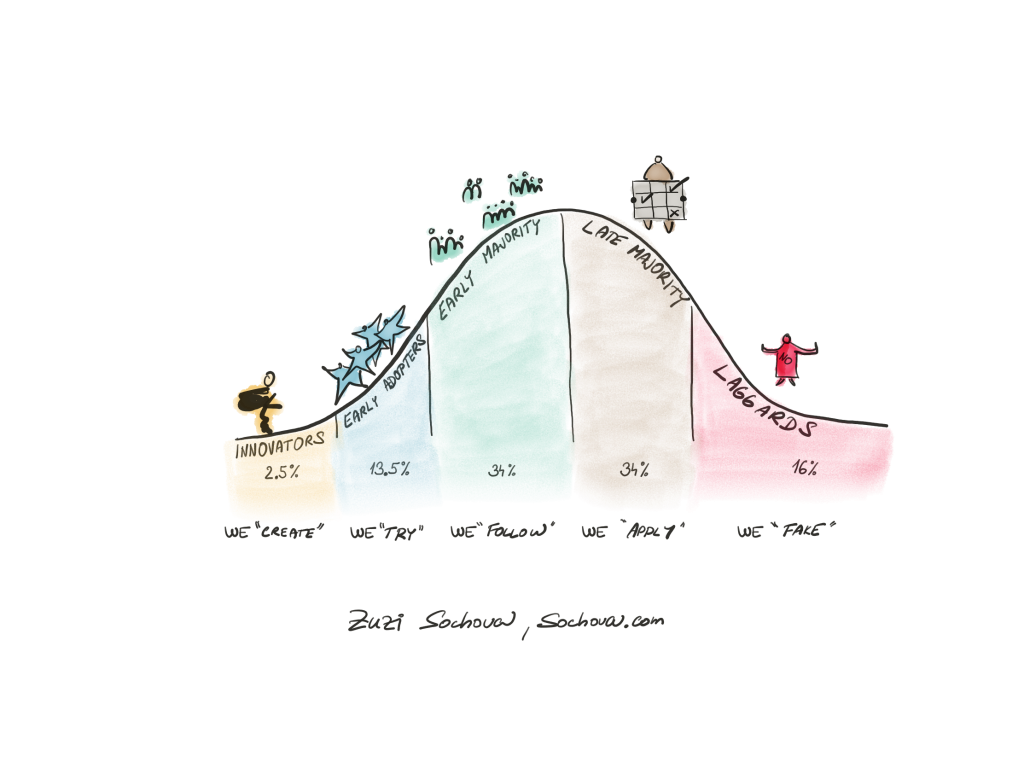People always ask how to start, what are the practices we need to do, what is the magic. They are looking for a cookbook, something to copy step by step. And they are often disappointed that I refrain from recommending them where to see the ideal example. Look what good or bad copying Spotify way of working brought to the industry. So if not copy what someone else did, how shall we start?
First step of every change is to create a sense of urgency. If you don’t have it, you won’t change. Ever. Because we are fine, we are good enough. We always did it this way. So to break a habit, you need to find a strong reason why keeping your habits is not a way forward. Only then you can start moving.
- Why do we have to change?
- What happen if we don’t?
Often, we see reasons why the change is inevitable. But ask yourself, hat about the others? Do they feel the same way? Communication is the key here. Communicate over and over again. Why are we doing it. The higher the urgency the higher the chance of success.
Second phase is start experimenting. Start small. No big changes. Note we are not looking for perfection, we look for good enough and inspect and adapt form there. One team after another. Learn from mistakes, develop the habit of continuous improvement. Implement the Kizen mindset. You can run the whole transformation in Scrum, iterating is Sprints, learning from retrospectives, getting feedback in Reviews, creating a Backlog with organizational impediments, and through that process inspect and adapt. Very agile, and very simple as well.
And how do you know it’s working? In general, when I go to organizations, I check two things:
- Do they work as individuals, or as a team.
- Are they delivering work, or end-to-end business value.
Individuals distribute work, deliver it and then try to merge it together. There is my work and your work. They don’t need each other much. It’s the world of work distribution, allocation, and individual responsibility. Team on the contrary are collaborating to achieve a goal. They don’t have roles; they do whatever it takes to achieve the common goal. Teams often leverage the pair work, swarming or mobbing. They learn, help each other. They are more creative and innovative and therefore more effective in solving complex problems.
The traditional world was full of managing dependencies. The skill-oriented departments were not value oriented but optimizing for individual performance. And don’t take me wrong, it totally made sense as the majority of their problems were just complicated, far from being unpredictable and complex. In the world where we know what needs to be done, the whole difficulty is how to plan and deliver it exactly according to the plan. The complexity and unpredictability of the nowadays business environment changed that. We realized we don’t know what needs to be done and all we can do is to inspect and adapt. Find a way how to achieve the business goals. Learn from feedback the sooner the better.
Both points are fundamentally changing the way we work. Both are necessary for agile to be successful. So, you can do a simple assessment 0-10. What is the quality of our collaboration, are we working as individuals, or self-managing, cross-functional, dedicated team? Are we output, skills, and effort oriented or are we outcome driven delivering end-to-end customer value? Just two scales to reflect. Agile is simple, right?


